Physical Properties |
|
| Chemical formula | SiO2 |
| Class | Tectosilicate 3D framework of linked tetrahedra |
| Crystal system | Hexagonal (rhombohedral) |
| Habit | Prismatic Massive |
| Color | Colorless White (milky quartz) Purple (amethyst) Pink (rose quartz)) Yellow (citrine) Brown or black (smoky quartz) Green (prasiolite) |
| Hardness | 7 |
| Specific gravity | 2.65 |
| Cleavage | None |
| Fracture | Conchoidal |
| Luster | Vitreous |
| Transparency | Translucent to transparent |
| Streak | White |
Optical Properties |
|
| PPL | Colorless Low relief |
| XPL | 1st order gray Undulatory extinction Will appear black through full rotation if looking down the C axis |
| δ | 0.009 |
| Twinning | None |
| Extinction | Undulatory |
| after Perkins, 303 |
Quartz in Hand Sample
Four variations on a theme
Subhedral quartz crystal
Double-terminated quartz crystals
Amethyst
Heat-treated amethyst often sold as citrine
Milky quartz
Rose quartz
Smoky quartz
Blue quartz in weathered granitoid
Reddish quartz with whitish, radiating barite and purplish-blackish botryoidal hematite on quartzite
Quartz with gold-colored rutile and silvery-gray ilmenite
Scanning electron micrograph of euhedral quartz
Scanning electron micrograph of anhedral quartz
These two scanning electron micrographs of double-terminated quartz crystals (“Herkimer diamonds“) come courtesy of Nik Deems.


Cryptocrystalline Quartz Minerals
Banded chert from the Fig Tree Formation, South Africa
Fossiliferous chert with sphalerite
Brecciated chert from the Corona Heights Fault, San Francisco
Chalcedony
Beekite, a type of chalcedony which forms when silica replaces carbonate minerals in fossils, present as concentric rings in a Devonian-aged fossiliferous sandstone
Jasper
Jasper in banded iron formation
Agate (dyed, but you’ll get the idea)
Agate in volcaniclastic breccia from Mount St. Helens
Quartz in Thin Section
Thin Section GigaPans
Looking for ghost boundaries/ghost structures? Head on over to the quartzite page.
Quartz in tuff, plane polars
Quartz in tuff, crossed polars
Quartz in quartzite, plane polars
Quartz in quartzite, crossed polars (with bonus hair in the field of view; oops)
Siliceous oolites, plane polars
Siliceous oolites, crossed polars
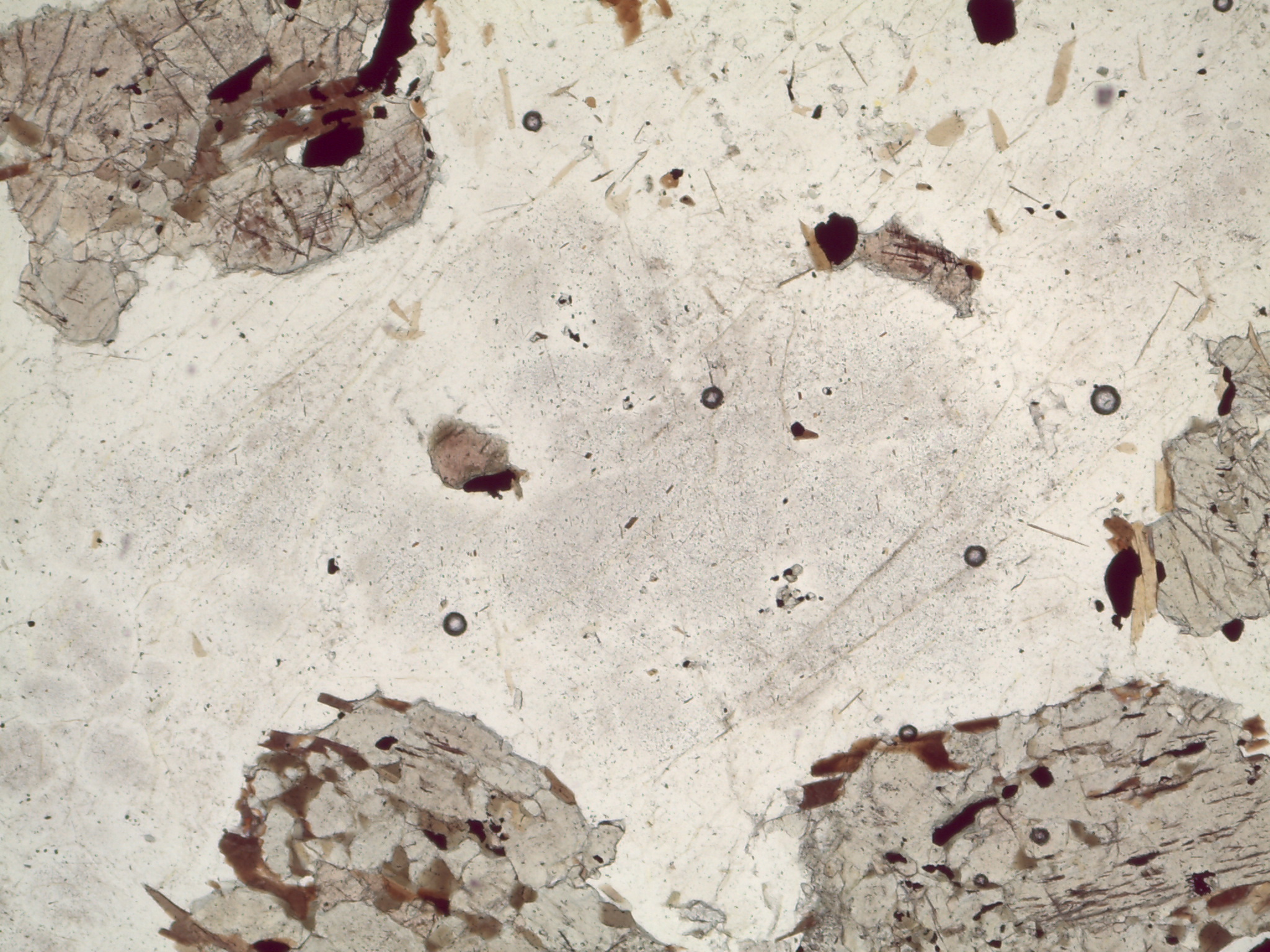

Quartz, XPLhttps://youtu.be/ppJP74V6Z88

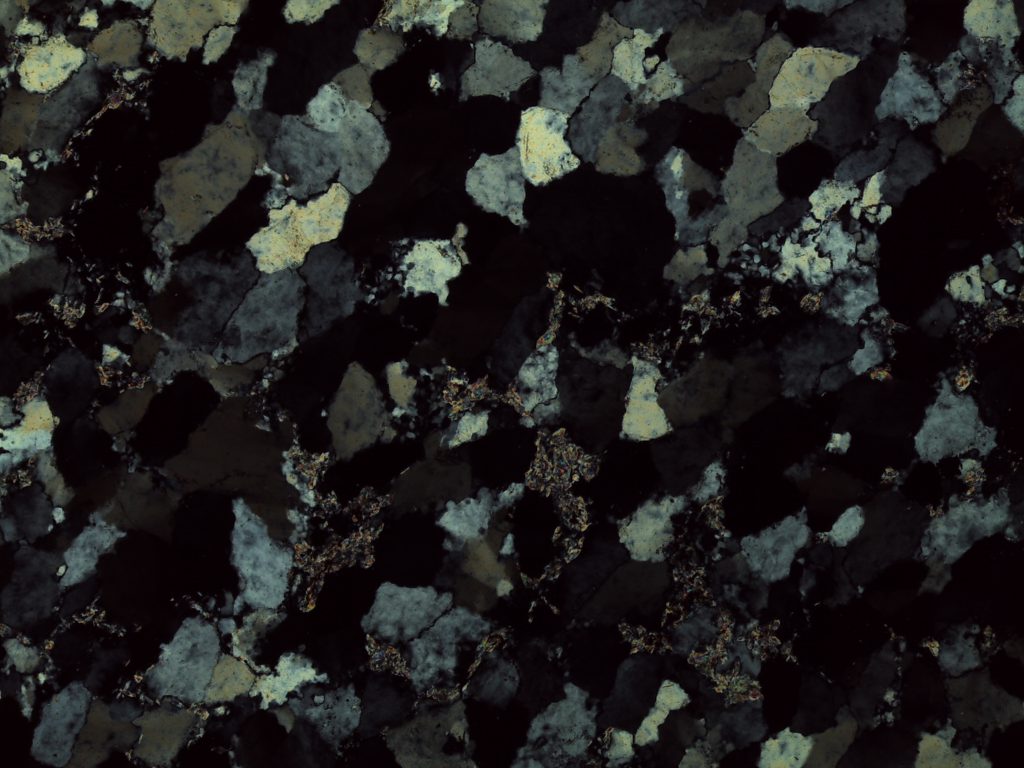
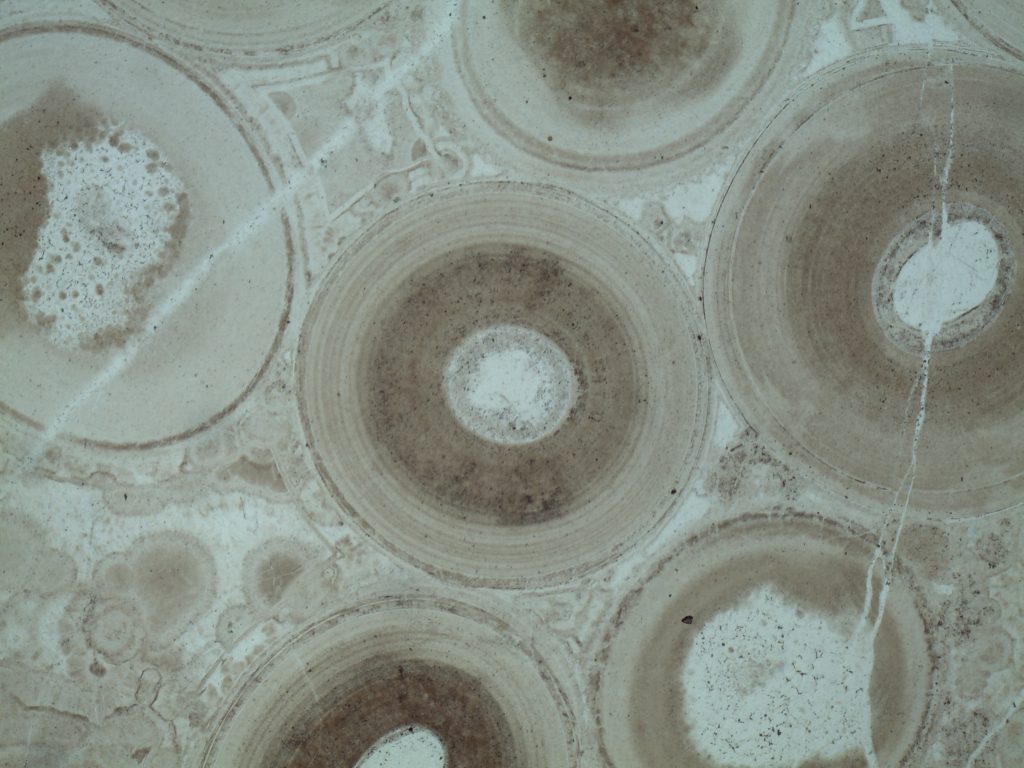
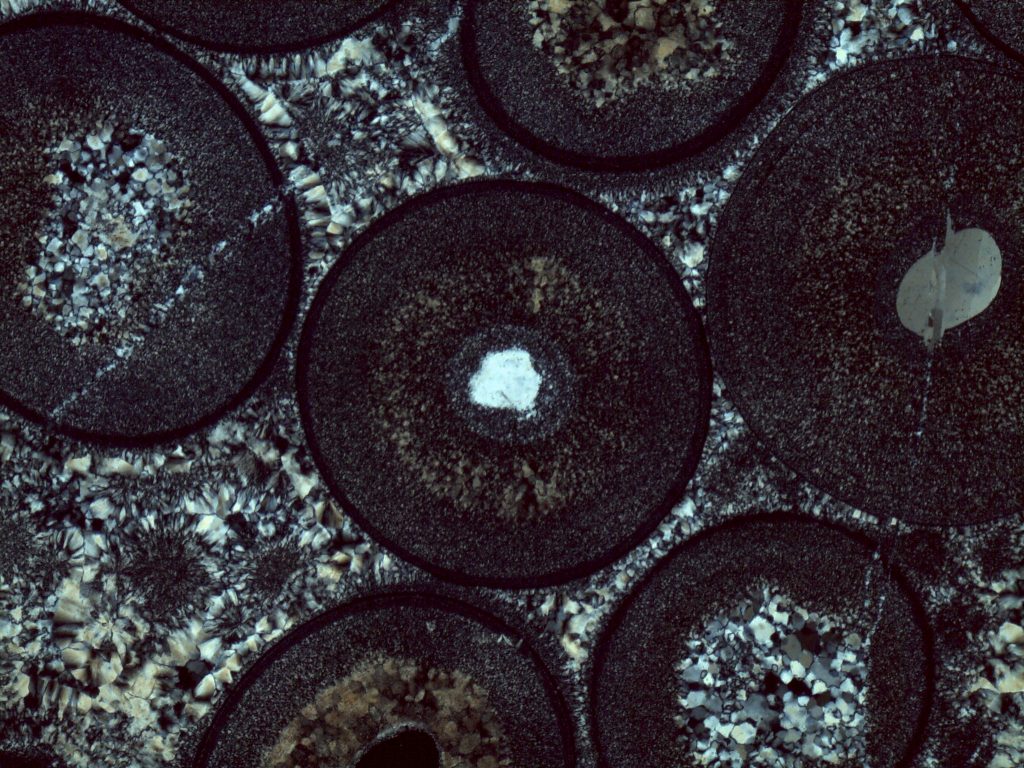
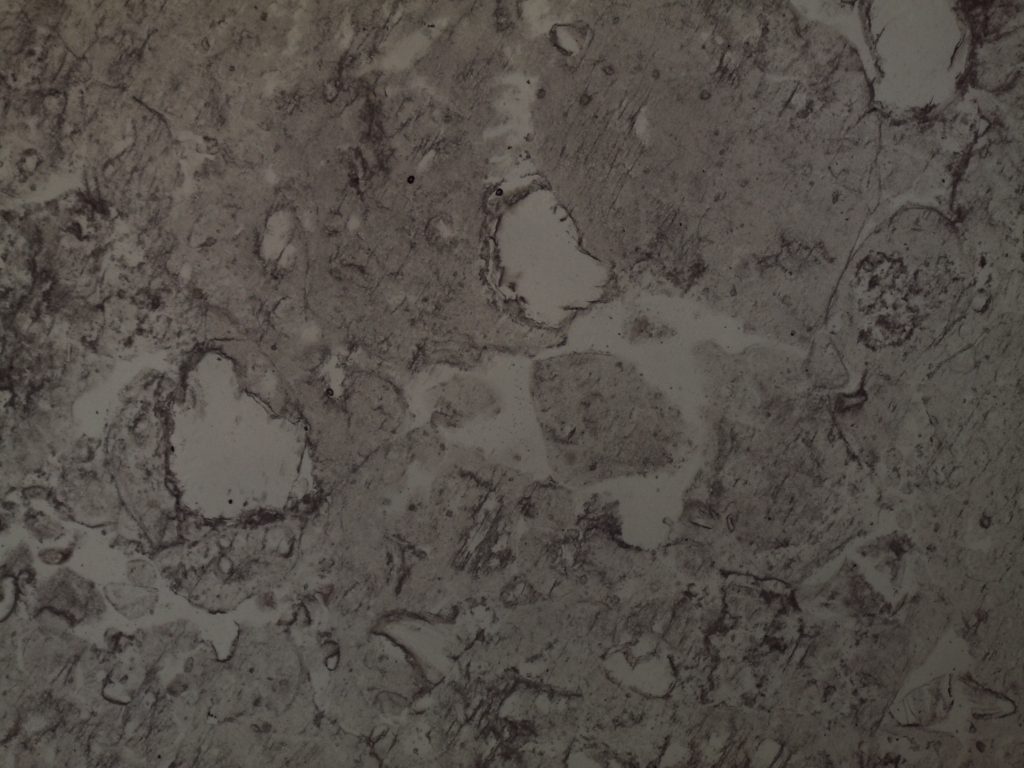

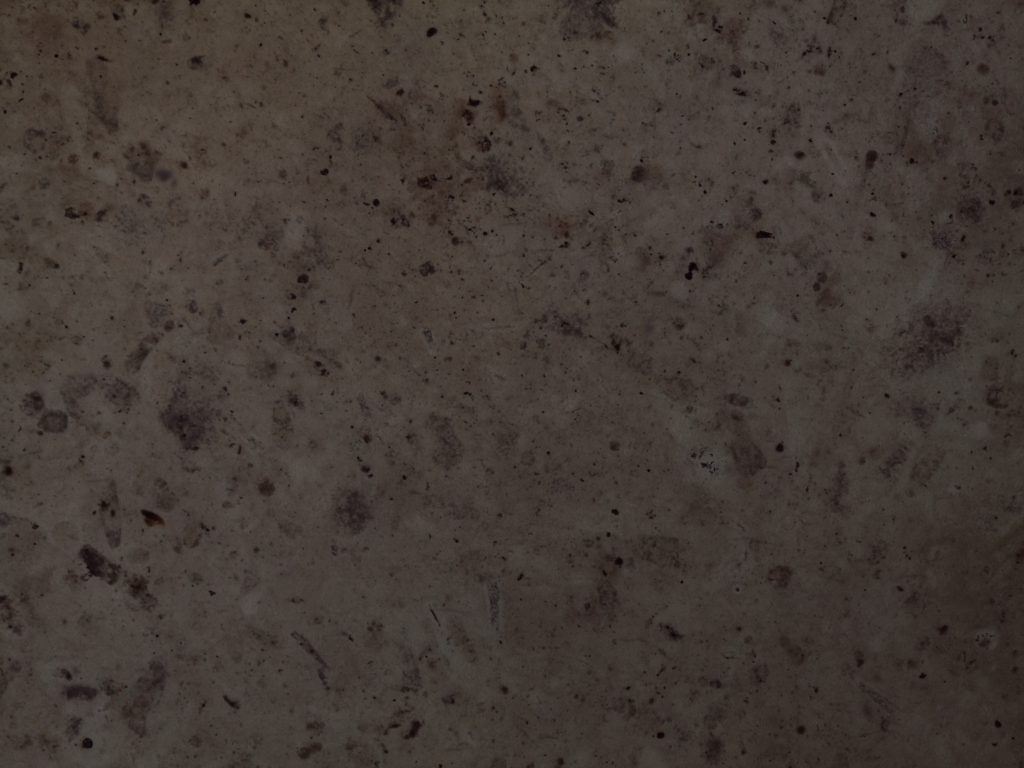



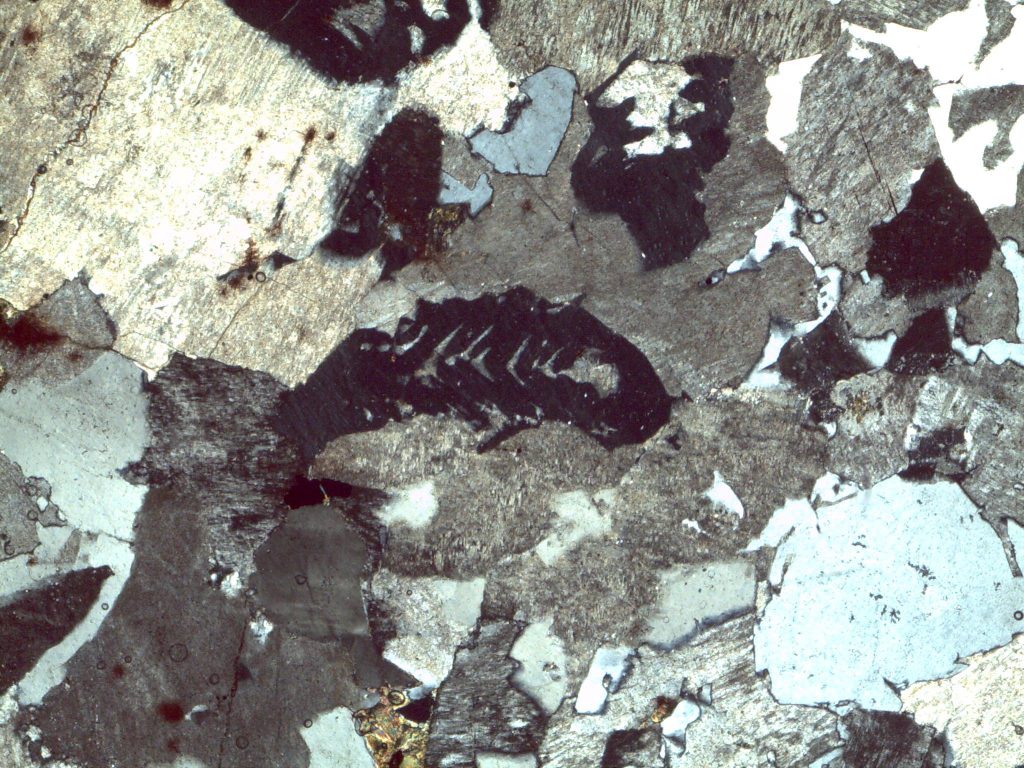
The Vagaries of Quartz Extinction
All the textbooks say that quartz is characterized by undulatory (or undulose) extinction.
It’s not that simple.
Sometimes it’s nice and smooth. Sometimes it’s genuinely undulatory. Sometimes the grain has been through an orogeny or something and is just a mess.
Quartz Oddities
If it’s more than 30µ thick, quartz will display 1st order yellows instead of 1st order grays. This is pretty common; sometimes it’s better to let the quartz be a little thick than to risk grinding too much material off your thin section. Yellowish quartz is an acceptable sacrifice, because you can still infer that it’s quartz by its extinction patterns. The quartz in this biotite gneiss is a great example. Had the person who made the thin section ground the sample down any farther, many of the feldspars would have been lost.
This slide obligingly provided a 30µ-thick quartz grain beside a thicker one, so you can see the comparison.
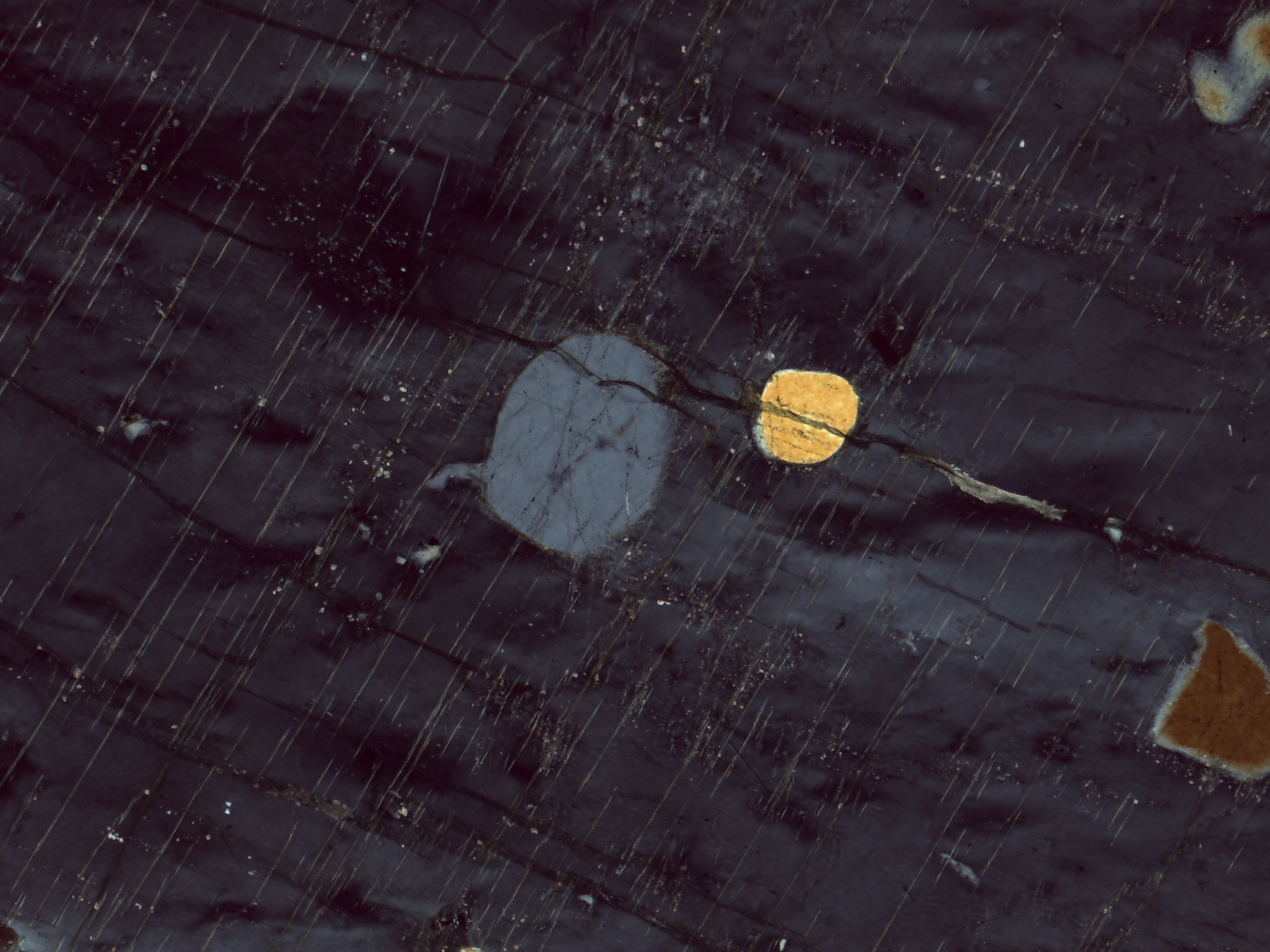
This a quartz sandstone whose clasts have been ground to uneven thicknesses.
Sometimes you’ll be staring at a grain that you just know is quartz, but it’s black, and it stays black through a whole rotation of the stage. It’s okay. It’s quartz. It’s just angled so that you’re looking straight down the C-axis.